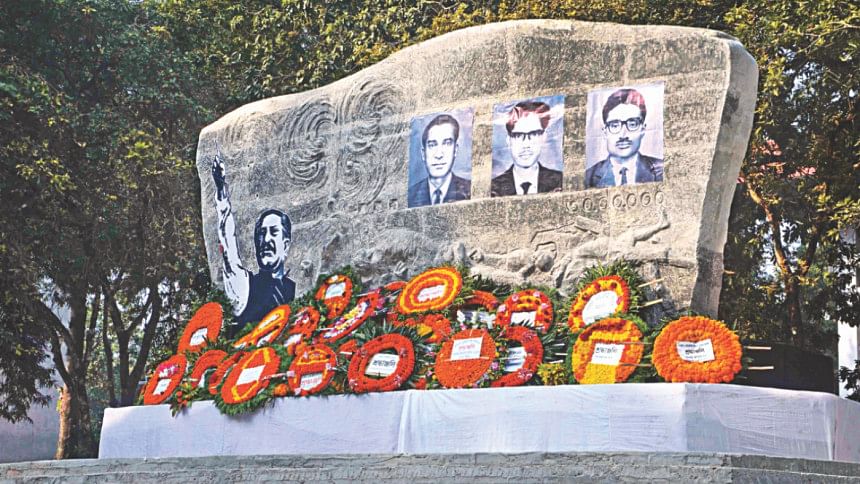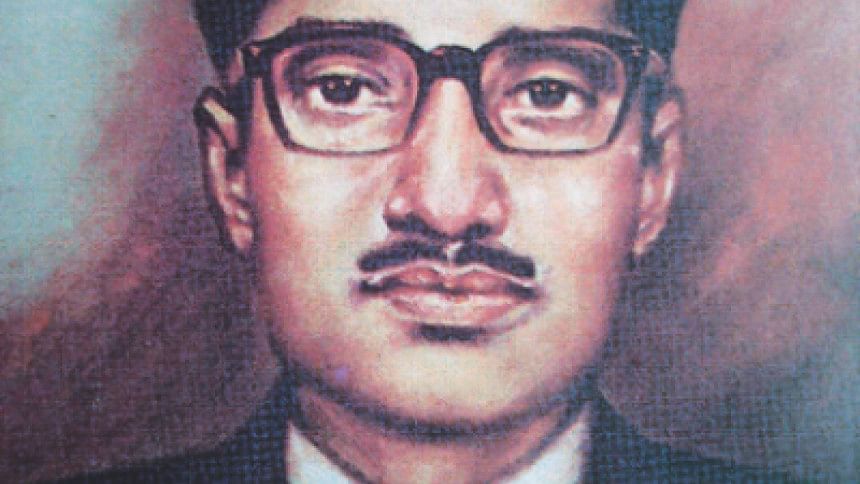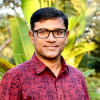45yrs of searching for an answer

Champa Somaddar still wonders today, after 45 years, why her husband was killed.
Sukharanjan Somaddar was a Sanskrit language teacher at Rajshahi University and had the repute of a singer. When the Liberation War broke out, he stayed unarmed with his wife and three children. He believed that he was a just a civilian. But probably he was forgetful of his identity.
“Even today I don't know why he should be killed,” said Champa, now 70, talking to this correspondent at her Seroil residence in Rajshahi city.
Sukharanjan's life was at risk for being a Hindu and the collaborators of Pakistani forces were at his doorstep, which they did not know, she said, recollecting the dreadful times of 1971. “Hindus were the prime targets of Pakistani invaders at the beginning,” she said.
The Pakistani occupation forces entered RU campus on April 13 afternoon. Many teachers left the campus, but only a few stayed, including Somaddar.
Military jeeps started roaming the campus streets breaking the silence of curfew, Champa said, adding the gunshots were so deafening as if shot just near their house.
“We passed the night awake.”

At midnight, a Bengali EPR (East Pakistan Rifles) soldier appeared at their window. He had a bullet injury. Sukharanjan gave him water and tied his wound with cloth. The soldier went away before daybreak. “This remained a secret until I revealed it after independence,” she said.
At 9:30am on April 14, 1971, a Pakistani military vehicle was parked near the Block-69 building. Some non-Bengali people (Urdu speaking and Muslim) camped there the day before, including one Motiur Rahman. The block was just in front of Block-71 where the Somaddars lived.
Champa said the Pakistani soldiers shook hands with the non-Bengalis and raided Somaddar's building looking for the injured EPR soldier. Five of them searched Somaddar's flat. Finding none, they went back to the vehicle. Then Motiur came out and called them back and pointed at Sukharanjan and said, “Ye Hindu hai (He is a Hindu)”, Champa recalled. The Pakistani troops then marched back to their flat and picked up Sukharanjan. He was never to be seen again.
Motiur, then chairman of the psychology department, and Ahmed Muhammad Patel, a teacher of geography, accompanied the Pakistani military who took away Sukharanjan in the vehicle.
“I ran to the Bihari families (of Block-69) crying. They assured me nothing would happen as Motiur and Patel were with him,” said Champa.
On that evening, Patel told Champa that she had nothing to worry as Sukharanjan was with Motiur and the then vice chancellor, Sayed Sajjad Hossain, at the guest house (now Juberi Bhaban).
Champa heard no more about her husband.
It was only after independence that she knew Sukharanjan was shot dead near a pond in Kajla area on the afternoon of that very day he was picked up. Locals buried him the next day. But the RU authority later, on February 25, 1972, reburied him in front of the central library on the campus.
“He had no reason to be killed,” Champa said, in tears. “But I heard Motiur identifying him as Hindu.”
The Samaddars were lucky to get his body back. Mathematics teacher Habibur Rahman, picked up on April 13, for hoisting the independent Bangladesh's flag at his home, remained untraced.
A third martyred intellectual of RU was Mir Abdul Quayum, whose family believes that Motiur had a hand in his killing as well.
Both Motiur and Patel went to Pakistan, the family said.

 For all latest news, follow The Daily Star's Google News channel.
For all latest news, follow The Daily Star's Google News channel. 



Comments